Concert Programmes
SSO GALA: HÉLÈNE GRIMAUD AND HANS GRAF
HÉLÈNE GRIMAUD IN RECITAL
SPONSORED BY




SSO GALA: HÉLÈNE GRIMAUD AND HANS GRAF
HÉLÈNE GRIMAUD IN RECITAL
SPONSORED BY



WELCOME! You’ve begun a richly rewarding musical journey and we want you to feel comfortable at the SSO. If there’s something you’ve always wanted to ask, check out our FAQ!
WHAT SHOULD I WEAR?
We don’t enforce any dress code. Many come in business attire or smart casual outfits, and that’s great.
WHEN SHOULD I CLAP?
Many pieces of music have multiple sections called movements. E.g. most concertos have three movements while symphonies usually have four. Traditionally, applause is only expected at the end of the entire work, rather than between each movement.
If you’re unsure, check our programme booklet, or wait for the conductor to put down the baton at the end, and acknowledge the orchestra and audience.
CAN I TAKE PHOTOS AND VIDEOS?
Video and photography of any kind are not permitted when musicians are actively performing. However, non-flash photography is allowed during bows and applause. Take home a musical memory and tag us on @singaporesymphony!
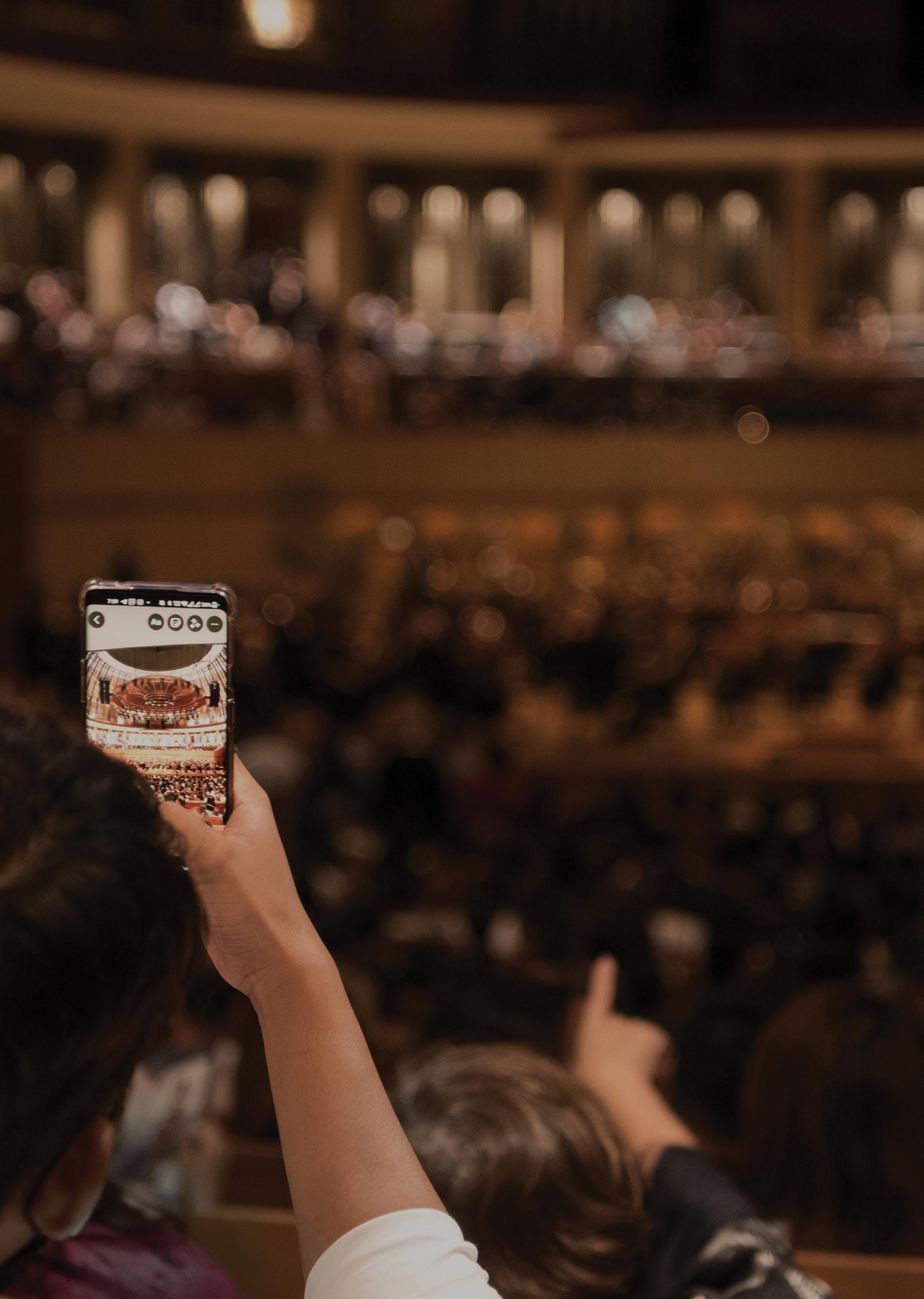
Wed, 16 Oct 2024
Victoria Concert Hall
Thu, 17 Oct 2024
Victoria Concert Hall
For the enjoyment of all patrons during the concert:
• Please switch off or silence all electronic devices.
• Please minimise noises during performance. If unavoidable, wait for a loud section in the music.
• No photography, video or audio recording is allowed when artists are performing.
• Non-flash photography is allowed only during bows and applause when no performance is taking place.
Go green. Digital programme books are available on www.sso.org.sg.
Photographs and videos will be taken at these events, in which you may appear. These may be published on the SSO’s publicity channels and materials. By attending the event, you consent to the use of these photographs and videos for the foregoing purposes.
Since its founding in 1979, the Singapore Symphony Orchestra (SSO) has been Singapore’s flagship orchestra, touching lives through classical music and providing the heartbeat of the cultural scene with its 44-week calendar of events.
In addition to its subscription series concerts, the orchestra is well-loved for its outdoor and community appearances, and its significant role educating the young people of Singapore through its school programmes. The SSO has also earned an international reputation for its orchestral virtuosity, having garnered sterling reviews for its overseas tours and many successful recordings. In 2021, the SSO clinched third place in the prestigious Orchestra of the Year Award by Gramophone. In 2022, BBC Music Magazine named the SSO as one of the 23 best orchestras in the world.
In July 2022, the SSO appointed renowned Austrian conductor Hans Graf as its Music Director, the third in the orchestra’s history after Lan Shui (1997-2019) and Choo Hoey (1979-1996). Prior to this, Hans Graf served as Chief Conductor from 2020.
The orchestra performs over 60 concerts a year, and its versatile repertoire spans all-time favourites and orchestral masterpieces to exciting cutting-edge premieres. Bridging the musical traditions of East and West, Singaporean and Asian musicians and composers are regularly showcased in the concert season. The SSO makes its performing home at the 1,800-seat state-of-the-art Esplanade Concert Hall. More intimate works, as well as outreach and community performances take place at the 673-seat Victoria Concert Hall, the Home of the SSO.
Beyond Singapore, the SSO has performed in Europe, Asia and the United States. In May 2016, the SSO was invited to perform at the Dresden Music Festival and the Prague Spring International Music Festival. This successful five-city tour of Germany and Prague also included the SSO’s second performance at the Berlin Philharmonie. In 2014, the SSO’s debut at the 120th BBC Proms in London received praise in major UK newspapers The Guardian and The Telegraph. The SSO has also performed in China on multiple occasions. In the 2024/25 season, the SSO will perform in Kyoto as part of the Asia Orchestra Week, as well as a three-city tour of Australia.
The SSO has released more than 50 recordings, with over 30 on the BIS label. Recent critically acclaimed albums include Herrmann’s Wuthering Heights (Chandos) and Scriabin – Poems of Ecstasy and Fire (BIS). With Singaporean violinist Chloe Chua, the SSO has recorded the Four Seasons, as well as the Butterfly Lovers Violin Concerto, and a Mozart Violin Concerto cycle with Hans Graf to be released by Pentatone Records in the 2024/25 season. The SSO also leads the revival and recording of significant works such as Kozłowski’s Requiem, Ogerman’s Symbiosis (after Bill Evans) and violin concertos by Robert Russell Bennett and Vernon Duke.

The SSO has collaborated with such great artists as Vladimir Ashkenazy, Gustavo Dudamel, Charles Dutoit, Joe Hisaishi, Neeme Järvi, Hannu Lintu, Lorin Maazel, Martha Argerich, Diana Damrau, Janine Jansen, Leonidas Kavakos, Lang Lang, Yo-Yo Ma, Mischa Maisky, Gil Shaham and Krystian Zimerman.
The SSO is part of the Singapore Symphony Group, which also manages the Singapore Symphony Choruses, the Singapore National Youth Orchestra, the Singapore International Piano Festival and the biennial National Piano & Violin Competition.
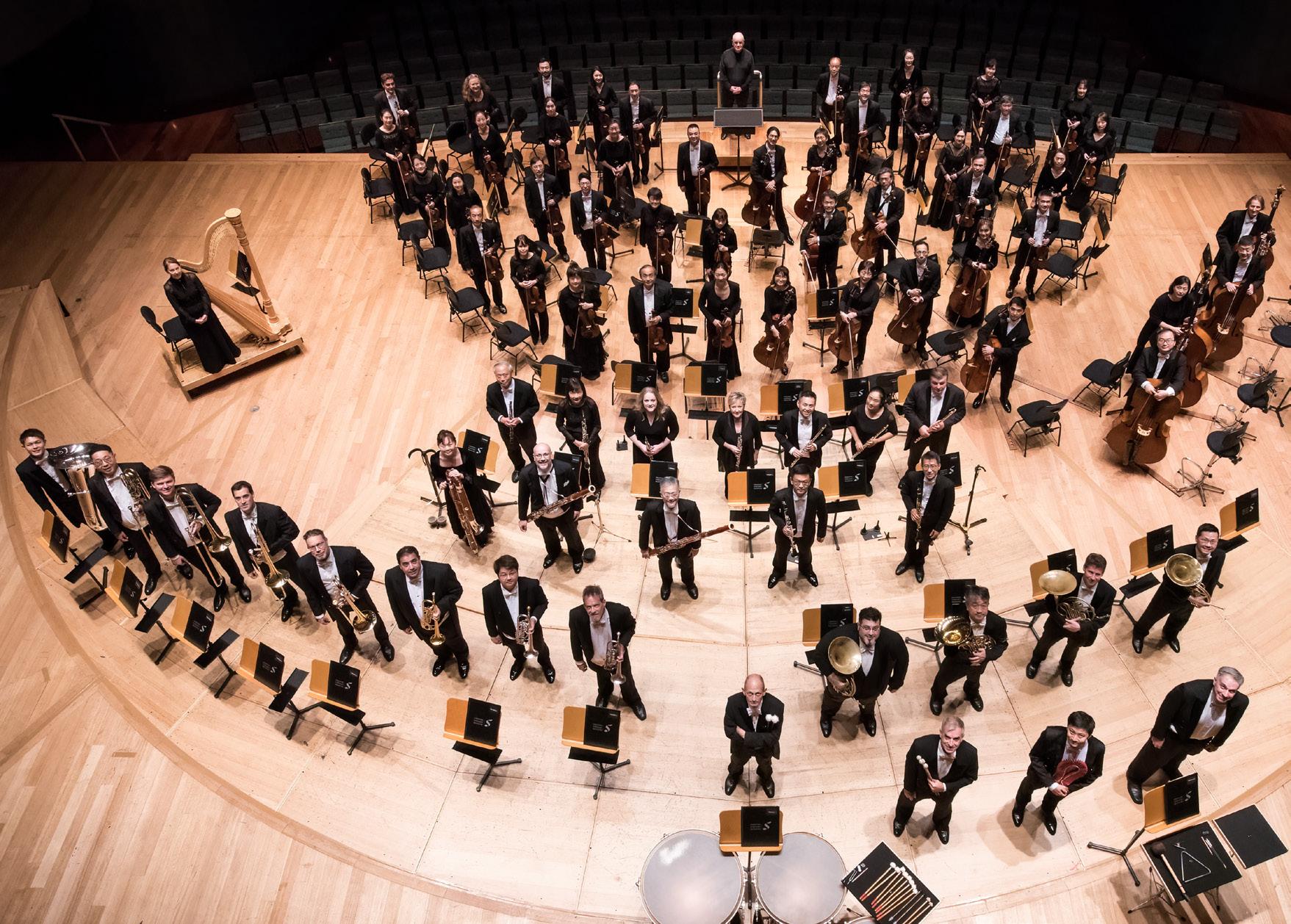
The Group’s vision is to be a leading arts organisation that engages, inspires and reflects Singapore through musical excellence. Our mission is to create memorable shared experiences with music. Through the SSO and its affiliated performing groups, we spread the love for music, nurture talent and enrich our diverse communities.
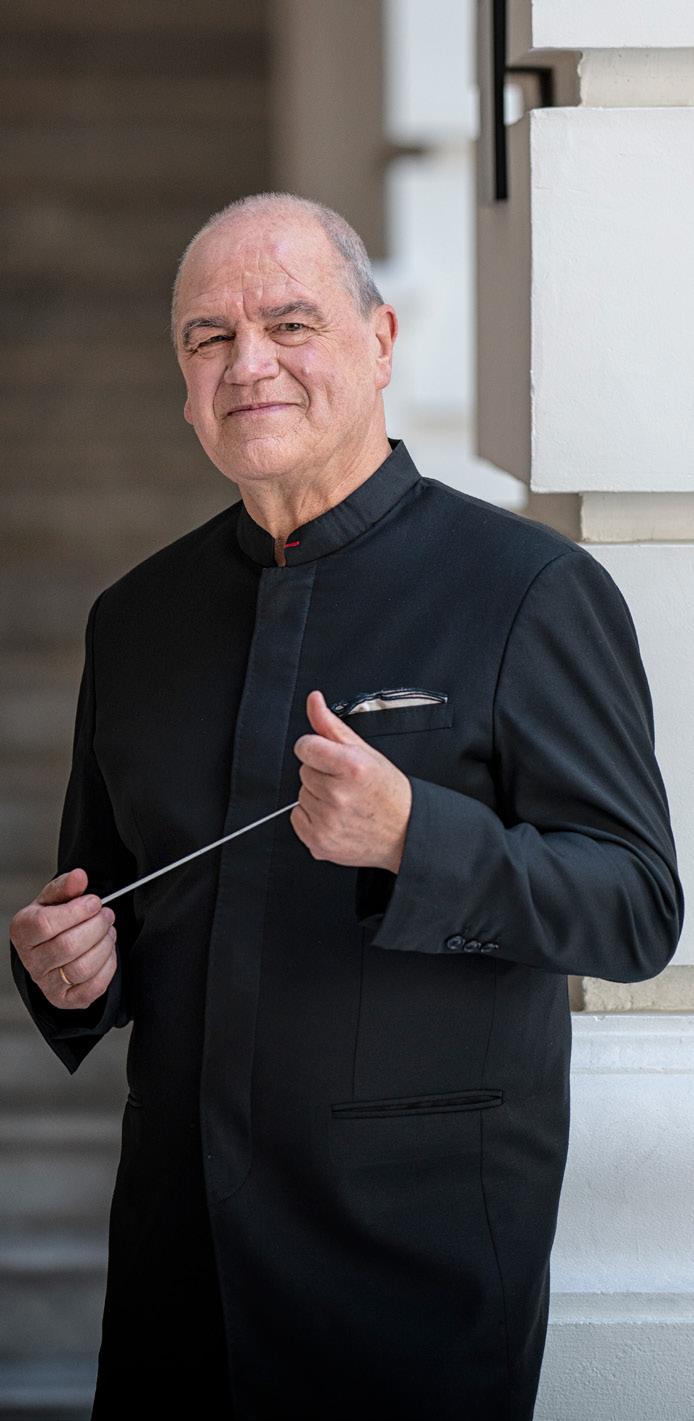
Armed with a spirit of musical curiosity and discovery, creative programming and his commanding presence on stage, Austrian conductor Hans Graf has raised orchestras to new heights while winning audiences young and old alike. With Hans Graf, “a brave new world of music-making under inspired direction” (The Straits Times) began at the Singapore Symphony Orchestra, as Chief Conductor in the 2020/21 season, and Music Director since the 2022/23 season.
Graf was formerly Music Director of the Houston Symphony, Calgary Philharmonic, Orchestre National Bordeaux Aquitaine,
Basque National Orchestra and the Mozarteum Orchestra Salzburg. He is a frequent guest with major orchestras worldwide including the orchestras of Boston, Cleveland, Los Angeles, New York, Philadelphia, Vienna, Leipzig Gewandhaus, DSO Berlin, Dresden, Royal Concertgebouw, Oslo, Hallé, London, Royal Philharmonic, Budapest Festival, St Petersburg, Russian National, Melbourne, Sydney, Seoul, Hong Kong, Malaysia, and the Bavarian, Danish and Netherlands Radio Symphony Orchestras. Graf has led operas in the Vienna State Opera, Munich, Berlin, Paris, Strasbourg, Rome and Zurich. In 2014 he was awarded the Österreichischer Musiktheaterpreis for Strauss’s Die Feuersnot at the famed Vienna Volksoper, where he returned in 2021 to lead Rosenkavalier.
Hans Graf’s extensive discography includes all symphonies of Mozart and Schubert, the complete orchestral works of Dutilleux, and the world-premiere recording of Zemlinsky’s Es war einmal. Graf’s recording of Berg’s Wozzeck with the Houston Symphony won the GRAMMY and ECHO Klassik awards for best opera recording. With the Singapore Symphony, Graf has recorded the music of Paul von Klenau, Józef Kozłowski’s Requiem, an upcoming Mozart Violin Concerto cycle with Chloe Chua, and Stravinsky Concertos with violinist He Ziyu and pianist Alexei Volodin.
Hans Graf is Professor Emeritus for Orchestral Conducting at the Universität Mozarteum, Salzburg. For his services to music, he was awarded the Chevalier de l'Ordre de la Légion d'Honneur by the French government, and the Grand Decoration of Honour of the Republic of Austria.
piano
Hélène Grimaud is a celebrated pianist whose artistry extends beyond the concert hall. Renowned for her poetic expression and technical prowess, Grimaud is also a dedicated wildlife conservationist and author. An exclusive Deutsche Grammophon artist since 2002, her recordings have earned prestigious accolades, including the Cannes Classical Recording of the Year and the Grand Prix du Disque.
Grimaud’s discography features acclaimed albums such as Credo, Reflection, and a celebrated Beethoven album with Staatskapelle Dresden. Her 2010 solo album Resonances and subsequent releases, including Duo with cellist Sol Gabetta and Memory (2018), highlight her diverse musical range. Her 2020 album The Messenger explores a unique dialogue between Mozart and Silvestrov.
In March 2023, Grimaud released Silent Songs, a collaboration with baritone Konstantin Krimmel, which received critical acclaim. Her latest project, For Clara (September 2023), revisits Robert Schumann’s Kreisleriana alongside Brahms’s Intermezzi and songs.
In the 2024/25 season, Grimaud will perform with the San Francisco Symphony, Philadelphia
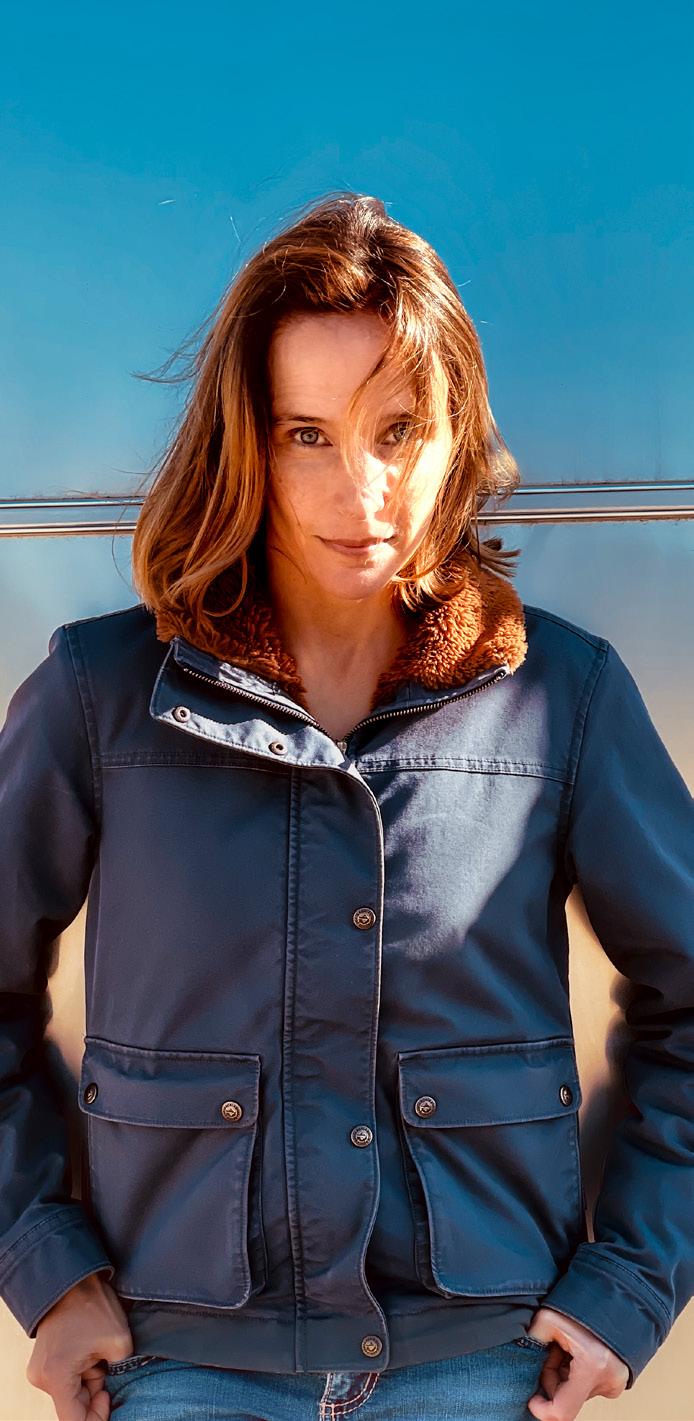
Orchestra, Dallas Symphony Orchestra, Singapore Symphony Orchestra, and NHK Symphony Orchestra. She will also give recitals at Carnegie Hall and in Singapore, Taipei, and São Paulo. In May and June 2025, she will tour Europe with the Camerata Salzburg.
Born in Aix-en-Provence in 1969, Grimaud was accepted into the Paris Conservatoire at just 13. In 1987, she gave her well-received debut recital in Tokyo. That same year, renowned conductor Daniel Barenboim invited her to perform with the Orchestre de Paris, marking the launch of Grimaud’s musical career, which has since been characterized by concerts with most of the world’s major orchestras and many celebrated conductors.
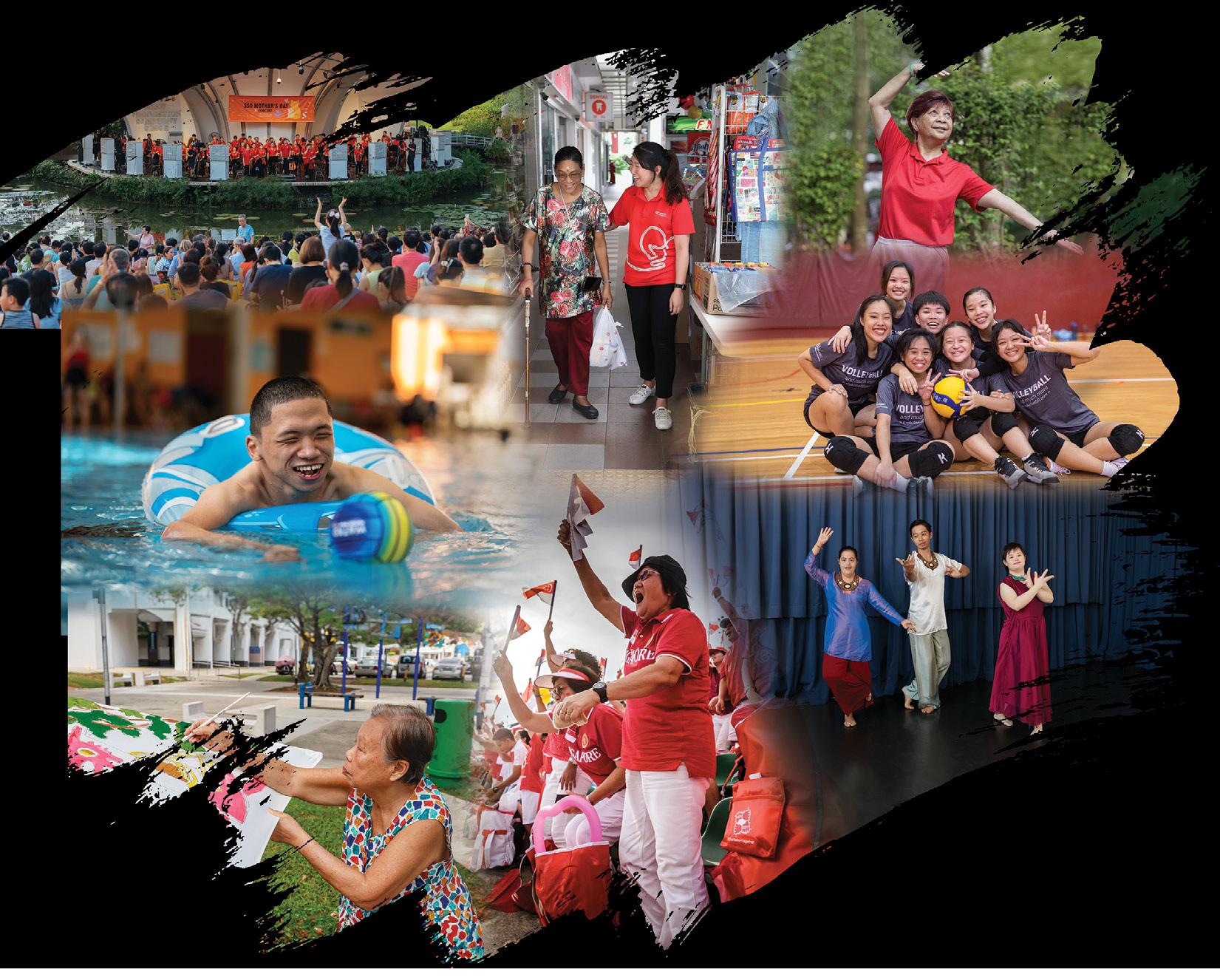


HANS GRAF
Music Director
RODOLFO BARRÁEZ
Associate Conductor
CHOO HOEY
Conductor Emeritus
LAN SHUI
Conductor Laureate
EUDENICE PALARUAN
Choral Director
WONG LAI FOON
Choirmaster
ELLISSA SAYAMPANATHAN
Assistant Choral Conductor
FIRST VIOLIN
(Position vacant) Concertmaster,
GK Goh Chair
David Coucheron
Co-Principal Guest Concertmaster
Kevin Lin
Co-Principal Guest Concertmaster
Kong Zhao Hui1
Associate Concertmaster
Chan Yoong-Han2
Fixed Chair
Cao Can*
Duan Yu Ling
Foo Say Ming
Jin Li
Kong Xianlong
Cindy Lee
Karen Tan
William Tan
Wei Zhe
Ye Lin*
Zhang Si Jing
SECOND VIOLIN
Nikolai Koval*
Sayuri Kuru
Hai-Won Kwok
Margit Saur
Shao Tao Tao
Tseng Chieh-An
Wu Man Yun*
Xu Jueyi*
Yin Shu Zhan*
Zhao Tian
VIOLA
Manchin Zhang Principal, Tan Jiew Cheng Chair
Guan Qi Associate Principal
Gu Bing Jie* Fixed Chair
Marietta Ku
Luo Biao
Julia Park
Shui Bing
Janice Tsai
Dandan Wang
Yang Shi Li
CELLO
Ng Pei-Sian Principal, The HEAD Foundation Chair
Yu Jing
Associate Principal
Guo Hao Fixed Chair
Chan Wei Shing
Christopher Mui
Jamshid Saydikarimov
Song Woon Teng
Wang Yan
Wu Dai Dai
Zhao Yu Er
DOUBLE BASS
Yang Zheng Yi Associate Principal
Karen Yeo Fixed Chair
Jacek Mirucki
Guennadi Mouzyka
Wang Xu
FLUTE
Jin Ta Principal, Stephen Riady Chair
Evgueni Brokmiller Associate Principal
Roberto Alvarez
Miao Shanshan
PICCOLO
Roberto Alvarez Assistant Principal
OBOE
Rachel Walker Principal
Pan Yun Associate Principal
Carolyn Hollier
Elaine Yeo
COR ANGLAIS
Elaine Yeo Associate Principal
CLARINET
Ma Yue Principal
Li Xin Associate Principal
Liu Yoko
Tang Xiao Ping
BASS CLARINET
Tang Xiao Ping Assistant Principal
BASSOON
Liu Chang Associate Principal
Christoph Wichert
Zhao Ying Xue
CONTRABASSOON
Zhao Ying Xue Assistant Principal
Austin Larson Principal
Gao Jian Associate Principal
Jamie Hersch Associate Principal
Marc-Antoine Robillard Associate Principal
Bryan Chong^
Hoang Van Hoc
TRUMPET
Jon Paul Dante Principal
David Smith Associate Principal
Lau Wen Rong
Nuttakamon Supattranont
TROMBONE
Allen Meek Principal
Damian Patti Associate Principal
Samuel Armstrong
BASS TROMBONE
Wang Wei Assistant Principal
TUBA
Tomoki Natsume Principal
TIMPANI
Christian Schiøler Principal
Mario Choo
PERCUSSION
Jonathan Fox Principal
Mark Suter Associate Principal
Mario Choo
Lim Meng Keh
HARP
Gulnara Mashurova Principal
With deep appreciation to the Rin Collection for their generous loan of string instruments. Musician on temporary contract
Kong Zhao Hui performs on a J.B. Guadagnini of Milan, c. 1750, donated by the National Arts Council, Singapore, with the support of Far East Organization and Lee Foundation.
Chan Yoong-Han performs on a David Tecchler, Fecit Roma An. D. 1700, courtesy of Mr G K Goh.
Musicians listed alphabetically by family name rotate their seats on a per programme basis.
HÉLÈNE GRIMAUD AND HANS
| 16 OCT 2024
FIRST VIOLIN
Markus Gundermann Guest Concertmaster
SECOND VIOLIN
Lisa Obert Guest Principal
DOUBLE BASS
William Cole Guest Principal
BASSOON
Ignas Mazvila Guest Principal
PIANO
Nicholas Loh
YANGQIN
Patrick Ngo

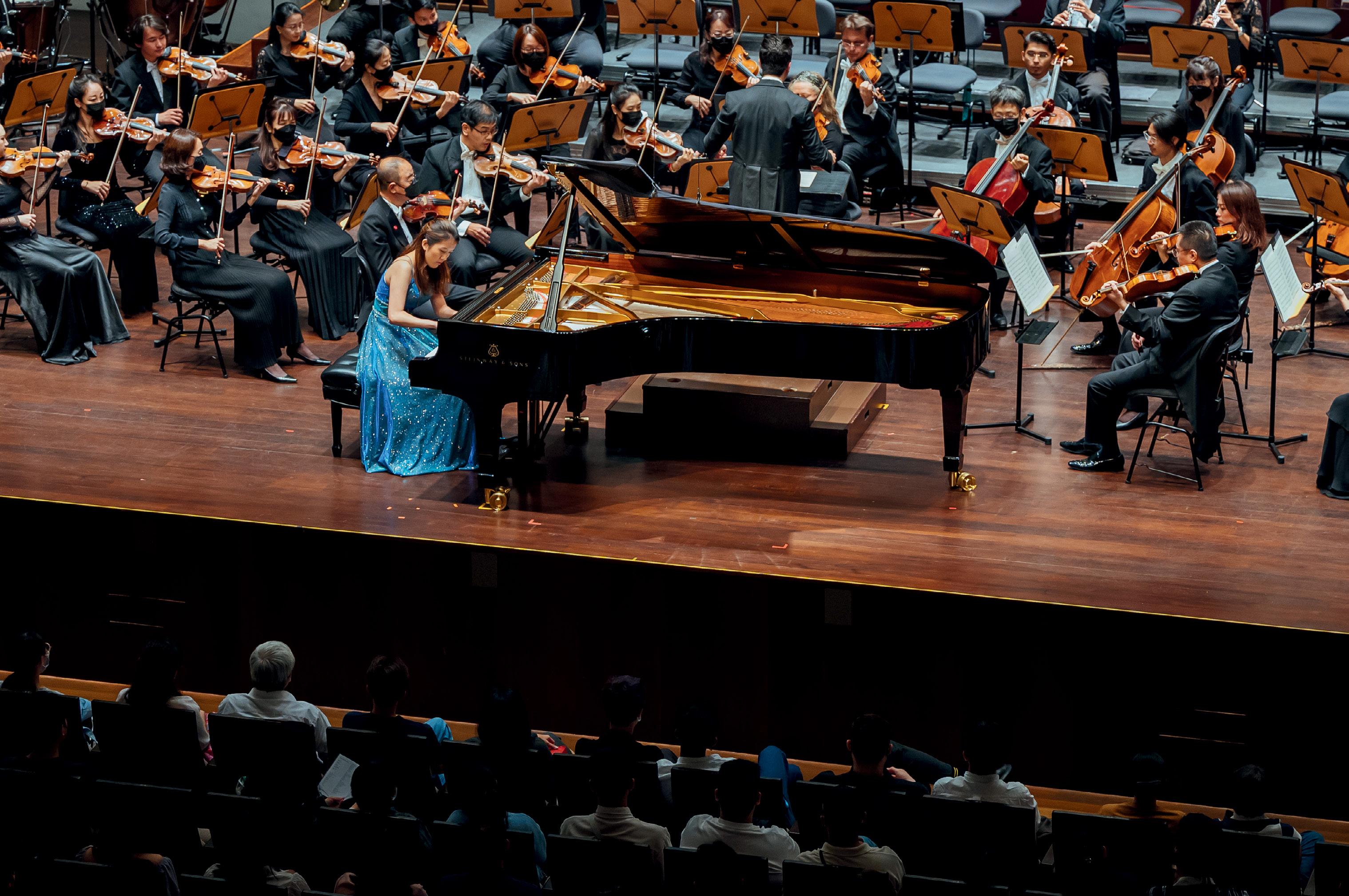



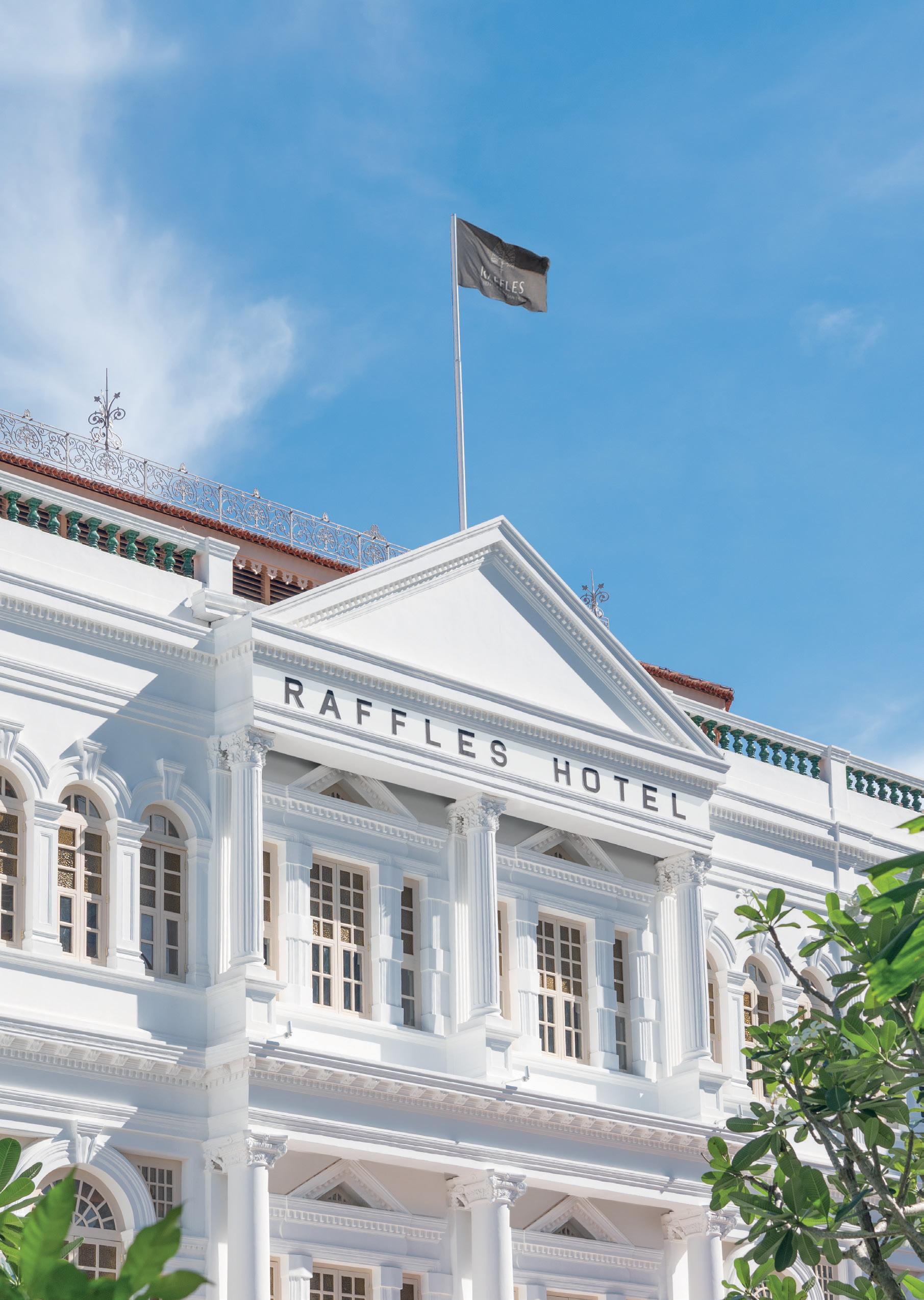
Wed, 16 Oct 2024
Victoria Concert Hall
Singapore Symphony Orchestra
Hans Graf Music Director
Hélène Grimaud piano*
Piano Concerto in G major*
Intermission
Symphony No. 5 in C minor, Op. 67
Sponsored by

Luciola singapura (2021)
Commissioned by the Singapore Symphony Orchestra for Singapore’s 56th birthday concert in 2021, Luciola singapura commemorates the major discovery of a new species of firefly that same year, the first since 1909, made by researchers from Singapore’s Lee Kong Chian Natural History Museum.
The Luciola singapura or Singapore Firefly, located in the Nee Soon Swamp Forest – Singapore’s last remaining freshwater swamp forest – is genetically and morphologically distinct from other species, hence deserving of its name. It has a beautiful, shimmery golden appearance, a sight truly unforgettable once beheld. With the colourful addition of the yangqin (Chinese dulcimer), an instrument special to my musical upbringing, the music strives to evoke the mysterious allure and animated vitality of this wondrous, luminous creature.
Chinese music gestures can also be heard dispersedly, combined with long melodic lines and fresh harmonies. Beyond the fusion of musical cultures and science, the work expresses the desire to celebrate all things uniquely Singaporean. It is my hope that Luciola singapura serves as a timely reminder for the preservation of endangered species and core habitats in the face of ceaseless modernisation and climate change.
Notes by the composer, Koh Cheng Jin
Instrumentation
piccolo, oboe, E-flat clarinet, bassoon, 2 horns, trumpet, suspended cymbal, glockenspiel, xylophone, tam-tam, mark tree, temple blocks, triangle, snare drum, bongos on timpani, harp, piano, yangqin, strings
World Premiere 29 Aug 2021
First performed by SSO 29 Aug 2021
KOH
composer
Writing music characterised by “lyrical centers,” that “channeled spirituality” and “vehemence” (The Straits Times), Singaporean composer and Yangqin performer Koh Cheng Jin strives to transcend cultural boundaries with imaginative storytelling and musicmaking. She was recently a grant winner of the New York State Council on the Arts and commissioned composer for the Smithsonian National Museum of Asian Art centennial celebrations and Singapore International Violin Competition.
Her collaborators include the Ensemble InterContemporain, Central Conservatory
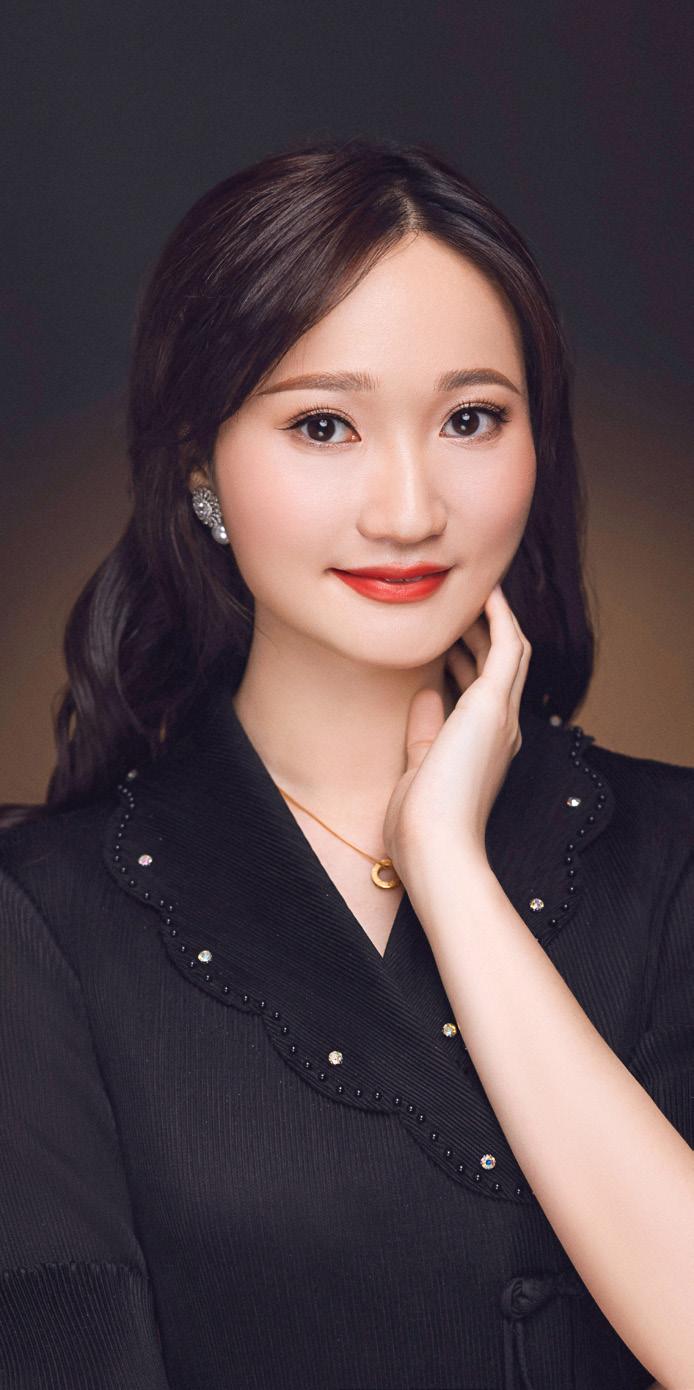
of Music, Singapore Symphony Orchestra, Singapore Chinese Orchestra, Ding Yi Music Company, American Guild of Organists, Verona Quartet, among many others. Some of her most significant accolades are a BMI Foundation Young Composer (William Schuman) Prize, an ASCAP Morton Gould Young Composer Award, Palmer Dixon and Gena Raps Chamber Music Prizes (both from Juilliard), and the Society of New Music Brian Israel Prize.
Festivals that have featured her music include the Singapore International Festival of Arts and Singapore International Piano Festival. Having completed her undergraduate and graduate studies at Juilliard, she is currently a PhD MacCracken composition fellow at New York University (GSAS).
Piano Concerto in G major (1931)
Allegramente
Adagio assai Presto
In classical music history, Ravel is almost always labelled as an “Impressionist” — a label he himself hated. Despite his skill at painting landscapes and especially his mastery of “watery” music (like in his piano masterpieces Jeux d'eau and Ondine), he saw a lot of his music as being motivated by the need to break away from the stranglehold of Germanness in the musical discourse of the day. So motivated, he sought his outlet by diversifying his influences and inspirations, reaching for his Basque ancestry, into the Baroque era, and a smattering of American jazz.
The result is Ravel as chameleon: he was brilliant at absorbing these disparate strands and tying them together into strong, unified wholes. With the Piano Concerto, it is no different: the opening whip-crack sets the stage for a surprisingly light orchestra rushing at full pelt with an ostensibly Basque folk tune. This initial flurry gives way to real jazz harmony, and the tension between these two sources fuels the energy of the rest of the movement, including a wide-ranging cadenza section with harp and woodwind solos pre-empting the big piano moment.
The second movement opens with one of the most sustained melodies Ravel ever wrote, and, with distinctly modal inflections, carries a very French manner of borrowing from the past. The counterpoint that arises, when the orchestra finally enters, is familiar
from earlier French masters from the turn of the century: late Fauré, late Saint-Saëns, and Ravel’s close contemporary Louis Vierne all wrote music like this, though perhaps not quite of the same clear, limpid quality that Ravel manages to achieve. Jazz sounds encroach slowly upon this calm, and take over fully in the Presto finale, a veritable hurricane sweeping through the whole orchestra.
Notes by Thomas Ang
Instrumentation
solo piano, flute, piccolo, oboe, cor anglais, clarinet, E-flat clarinet, 2 bassoons, 2 horns, trumpet, trombone, timpani, bass drum, snare drum, suspended cymbal, tam-tam, triangle, whip, wood blocks, harp, strings
World Premiere 14 Jan 1932, Paris
First performed by SSO 12 Feb 1982 (Bernard Ringeissen, piano)
Symphony No. 5 in C minor, Op. 67 (1808)
Allegro con brio
Andante con moto
Scherzo. Allegro – Trio
Allegro – Presto
When novelist E.M. Forster wrote Howard’s End around 1908, recordings or the radio had not been invented; one can only imagine how few times Forster heard the work. Yet, it left an indelible impression on him that he used its movements to structure the novel’s plot. He opens his fifth chapter with the high praise “... that Beethoven’s Fifth Symphony is the most sublime noise that has ever penetrated into the ear of man. All sorts and conditions are satisfied by it.”
Beethoven described the opening rhythm as “fate knocking at the door”. This rhythm is heard throughout the symphony in various guises through its four movements.
In the Allegro con brio, fate knocks in almost every bar. Beethoven builds up the intensity as the music develops, and then suddenly time stops for a moment: everything freezes and an unaccompanied oboe plays a quasi-cadenza before it is business as usual with the recapitulation.
The Andante con moto follows a loose theme and variations form. In the more muted key of A-flat major, the first theme is introduced by lower strings, and the second, by the woodwind choir and higher strings. Just when one thinks that the music will end quietly, Beethoven builds up to a martial ending, all the while staying on an A-flat chord.
In the Scherzo the basses creep in, joined by the higher strings, and the horns cross their path with their own loud, insistent version of fate. These alternate until the scene changes to the key of C major, marking the start of the Trio section. When the scherzo returns, it is quieter before with the strings plucking instead of bowing.
Timpani rolls set an atmosphere of expectancy, with a sustained chord in the winds and an insistent tremolo in the strings until the music bursts forth in an explosion of brilliance in C major from brasses, announcing the triumphant Allegro – Presto. “Beethoven chose to make all right in the end”, Forster writes, affirming the victory with fifty-four bars of pure C major music and destroying any shadow of doubt.
Notes by Natalie Ng
Instrumentation
2 flutes, piccolo, 2 oboes, 2 clarinets, 2 bassoons, contrabassoon, 2 horns, 2 trumpets, 3 trombones, timpani, strings
World Premiere 22 Dec 1808, Vienna
First performed by SSO 4 Dec 1981
Thu, 17 Oct 2024
Hélène Grimaud piano
BEETHOVEN
BRAHMS
BRAHMS
BACH/BUSONI
Piano Sonata No. 30 in E major, Op. 109
Three Intermezzi, Op. 117
Intermission
Fantasies, Op. 116
Chaconne from Partita No. 2 in D minor, BWV 1004
Concert Duration: approximately 1 hr 50 mins (including 20 mins intermission)
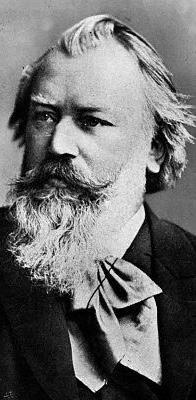

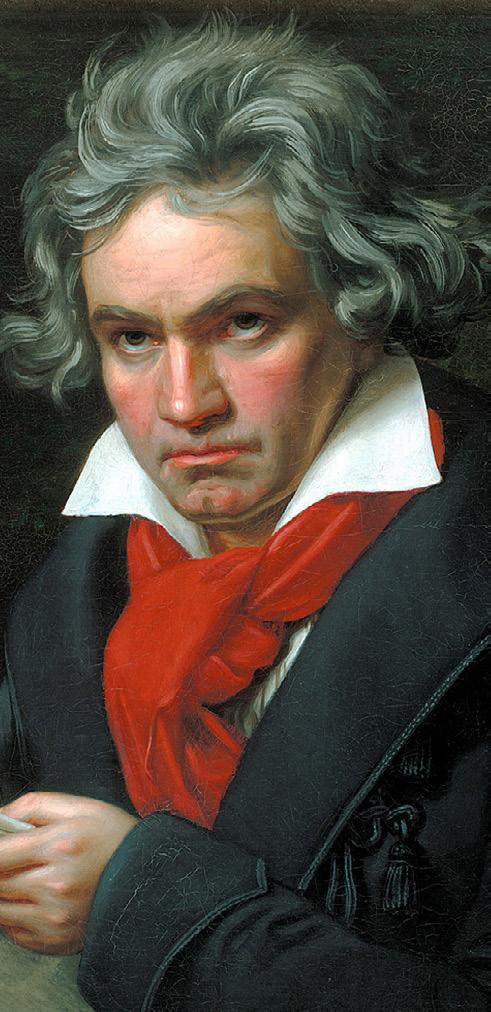
The Three B’s of Classical Music was a term coined by composer Peter Cornelius (1824–1874) in an article in German music magazine Berliner Allgemeine Musikalische Zeitung in 1854, identifying composer Hector Berlioz as the musical successor to Beethoven.
The person responsible for championing the third B as Brahms was pianist and conductor Hans von Bülow, who remarked, “Mein musikalisches Glaubensbekenntnis steht in Es dur, mit drei B-en in der Vorzeichnung: Bach, Beethoven und Brahms!” (“My musical creed is in the key of E-flat major, with three flats in the key signature, Bach, Beethoven and Brahms!”). As a composer, Brahms felt that he stood in Beethoven’s shadow, with Beethoven being
classical music’s GOAT (Greatest Of All Time) since the 1820s. When Brahms finally wrote his first symphony after an attempt that took 20 years, Bülow called it Beethoven’s Tenth. This association stuck for posterity, despite Wagner trying to posit Bruckner as the third B.
This evening, pianist Hélène Grimaud presents a recital of music from Bülow’s trinity of classical music, Bach, Beethoven, and Brahms. The repertoire is tinged with a sense of pathos: the works by Beethoven and Brahms were written in the composers’ autumnal years and among their last works written for solo piano; and the Bach Chaconne was conceived during a period of mourning.
Vivace ma non troppo – Adagio espressivo
Prestissimo
Gesangvoll, mit innigster Empfindung. Andante molto cantabile ed espressivo
With the last triptych of piano sonatas (Op. 109, 110 and 111) that he worked on at the same time between 1820–1822, Beethoven decided that he had said his final words for the piano sonata as a genre, preferring to use his remaining time left on Earth composing his Ninth Symphony and string quartets.
As if aware of their own mortality, many composers’ later works are their thoughts distilled into the most concentrated, significant (and sometimes brief) proclamations, throwing away all semblance of having to be polite, or conform to public or aristocratic musical expectations. These three last sonatas show an increased density of sound with its use of the pedal sonorities as well as extravagant use of trills in all registers of the piano, but curiously, also an increased density of texture that makes the music almost fugal.
The listener is taken on a journey through two contrasting emotional states before the healing and reconciliation happens in the third movement’s theme and variations. All through the sonata we catch glimpses of Bach’s shadow lurking around the corners, in some places more obvious than others.
The broken-chord patterns opening the first movement bring to mind the patterns in the Well-Tempered Clavier, before a diminished 7th chord and a cascade of arpeggios. These alternating themes make up the
first movement, which comes to a rest on an E major chord, before its evil twin E minor rears its head in an agitated, intense outburst with passages of canons and double counterpoint.
All through the sonata we catch glimpses of Bach’s shadow.
The finale concludes the sonata with a spirit of peace and almost-religious ecstasy, Beethoven writes a slow elegiac melody in the style of a Baroque sarabande for the main theme, instructing the pianist to play it “singing, with deepest feeling”. In the following variations, the first is an Italian operatic aria of sorts, and Variation 2 brings to mind the first movement, with interlocking hand patterns. Variation 3 features more counterpoint in two voices, and this is added to in Variation 4 and 5, with the music becoming increasingly imitative. Variation 6 sees the theme transformed from simple harmonisations to swirling, whirling figurations with constant trills throughout in different registers, before the original melody returns in its simple form, à la Bach’s Goldberg Variations.
Three Intermezzi, Op. 117
Andante moderato
Andante non troppo e con molto espressione
Andante con moto
In 1890, at the age of 57, Brahms announced his retirement, claiming that he was done with composing. Two years later however, he produced his last piano works, Op. 116–119, four sets of short pieces that have now come to be gems of piano repertory. Throughout the works one gets a sense of rage against the injustices of life, resignation at not being able to stop fate, and finally the rest that comes with acceptance and peace. At the time of composition, Brahms had lost some friends and could also have been aware that his time was coming to an end; as such, he describes the human experience musically in a visceral and direct way.
Op. 116 and 117 were both written in the summer of 1892 during a short stay at Bad Ischl. Brahms described the Three Intermezzi, Op. 117 as “three lullabies to my sorrows”, based on text by Johann Gottfried Herder. Clara Schumann, most likely the secret dedicatee of these pieces, wrote about them in her diary in November 1892 that they were “a true source of enjoyment, everything, poetry, passion, rapture, intimacy, full of the most marvellous effects… In these pieces I at last feel musical life re-enter my soul, and I play once more with true devotion.”
The first intermezzo in E-flat major is prefaced with the text “Schlaft sanft mein Kind, schlaft sanft und schön! Mich dauert’s sehr dich weinen sehn”, which translates to
“sleep well my child, lie still and sleep; it grieves me sore to see you weep” and the music corresponds perfectly to the text: the first stanza in the outer sections, and the second stanza in the middle section. The melody is angelic and tender, underneath the sonorous and bell-like octaves in the right-hand part. The middle section, set in the minor key, is agitated and poignant, and when the calm first melody returns, it is split between both hands, as if in reminiscence of time past.
The second intermezzo, set in the key of B-flat minor, is filled with fluid, falling arpeggios and restless irregular phrases. The first theme that emerges from the opening arpeggios is transformed throughout the piece and culminates quietly in the final bars.
The third intermezzo, set in the key of C-sharp minor, is some of Brahms’s most mysterious and haunting music that the composer himself referred to as “the lullaby of all my grief”. The voices wander solemnly in the first section, the middle section features a brief quote from the second movement of his First Violin Sonata; and time seems to stop for a moment as the music transitions back to the first theme.
Fantasies, Op. 116
Capriccio. Presto energico
Intermezzo. Andante
Capriccio. Allegro passionato
Intermezzo. Adagio
Intermezzo. Andante con grazia ed intimissimo sentimento
Intermezzo. Andantino teneramente
Capriccio. Allegro agitato
The word “fantasy” in music can be taken to mean an improvisation – composers from Bach to Mozart and Schubert wrote such fantasies; and later in the 1800s the word also came to be used for shorter character pieces, as with Schumann’s Fantasiestücke. Brahms’s set of Fantasies, Op. 116 seem to encompass both definitions of the word.
I like the deeply passionate ones as much as the dreamy onces, in which such exquisite sounds are conjured out of the piano.
The relationship between the keys and the thematic material seem to suggest that all seven should be played as a set: No. 1 and No. 6 are both stormy Capriccios set in the key of D minor, teeming with diminished chords, thirds, and syncopations. No. 2 in A minor sees the thirds and sixth transformed into a tender song that Clara Schumann said she was enchanted with.
The passion returns in Capriccio No. 3, which begins as though the listener is
dropped right in the middle of a heated debate. The middle section takes a turn to the major key and takes the form of a solemn march-like song. Nos. 4 and 6 are set in the key of E major, linked in the music by a little chromatic motif of B to B-sharp to C-sharp. The middle No. 5 is in E minor, constructed with little sigh-like motifs.
Writing to Brahms, Clara Schumann had these words to offer on the collection: “… each one in its own way. I like the deeply passionate ones as much as the dreamy ones, in which such exquisite sounds are conjured out of the piano.”
Chaconne from Partita No. 2 in D minor, BWV 1004 (arr. Ferruccio Busoni)
In the summer of 1720, Johann Sebastian Bach bade farewell to his wife, Maria Barbara in Köthen and travelled with his patron, Prince Leopold of Anhalt-Köthen and six other musicians to the Bohemian spa town of Karlsbad (better known as Karlovy Vary).
He and Maria Barbara had a contented marriage of 13 years, in which she bore him seven children. Upon returning to Köthen a few months later, he was shocked to discover that she had fallen ill, died, and was buried just a week prior even though she was in the full bloom of health when they parted.
That year, Bach was working on a set of six partitas and sonatas for solo violin. Distressed and distraught, Bach poured his bereavement into his music by inserting cryptic references, the first of which is the title: Sei solo a violino senza basso accompagnato.
Sei Solo. If written in proper Italian, the title should have been sei soli, the plural form for the collection of the six works. However, if one is a reader of Italian, then the words Sei Solo take on another meaning: you are/ he is alone.
The spotlight is put on the second partita because of the closing Chaconne – Bach could have ended the suite with the upbeat gigue, as is per usually done for all of his suites (even those for other instruments), but in this particular one, he added in this nearly 15-minute Chaconne, a single monumental movement that runs for as long
as the former four movements put together.
Within the Chaconne are many variations based on an 8-bar phrase, cast in three distinct sections: two outer D minor sections with one in D major in between. The variations are ever evolving, searching and probing, and settle temporarily in a D minor resolution. The opening chorale of the D major section seems to offer a brief respite, working itself up to a joyous peak before the D minor section returns somewhat regretfully.
Using the sonic possibilities and range of a modern grand piano, Busoni expands the Chaconne with a sound world in orchestral scale.
In this transcription, it is as if virtuoso pianist Ferrucio Busoni (1866–1924) imagines Bach, sitting high up at the organ of the Leipzig Thomaskirche, filling it with a lament so grandiose that the stone walls of the church shake in response. Using the sonic possibilities and range of a modern grand piano, Busoni expands the Chaconne with a sound world in orchestral scale, controlled by a single person, organ-like.
Busoni’s writing includes chord spacings across different registers, which is more
typical in organ-music; marks the beginning of the D major section quasi tromboni, requesting the pianist to sound like a brass choir; but the most majestic is the final restatement of the theme where we can almost hear the magnificent growl of the pipe organ and the peal of tolling church bells bringing the Chaconne to a close.
Notes by Natalie Ng
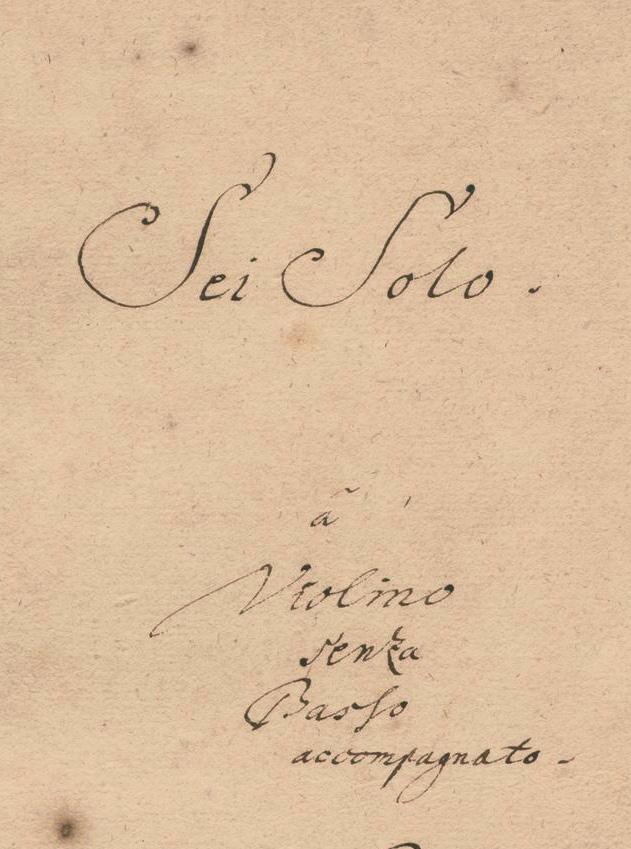
Autograph manuscript of BWV 1001–1006 (c. 1720) by Johann Sebastian Bach
We would like to express our deepest appreciation to the following individuals and organisations who support our mission to create memorable shared experiences with music in the past year.
Without your support, it would be impossible for the SSO to continue to strive for artistic excellence and touch the hearts of audiences.
PATRON SPONSOR
Tote Board Group
(Tote Board, Singapore Pools & Singapore Turf Club)
MAESTRO CIRCLE
Mr & Mrs Goh Yew Lin
Stephen Riady Group of Foundations
Estate of Tan Jiew Cheng
Temasek Foundation
The HEAD Foundation
SYMPHONY CIRCLE
Dr & Mrs Antoine & Christina Firmenich
Holywell Foundation
Lee Foundation
Lee Li Ming
Paige Parker & Jim Rogers
Jacqueline Yeh
Yong Hon Kong Foundation
Anonymous (2)
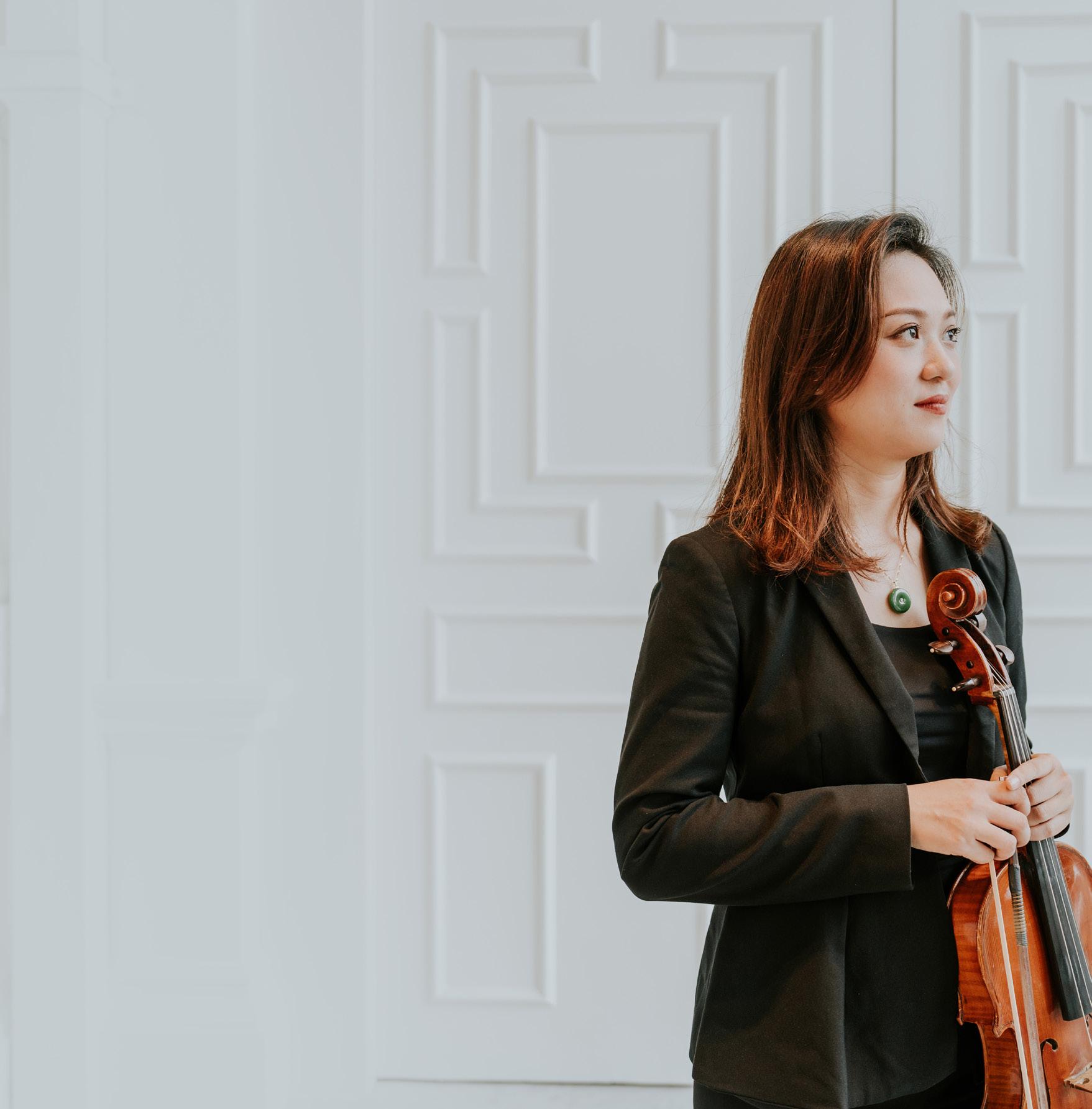
CONCERTO CIRCLE
Prof Chan Heng Chee
Cara & Tamara Chang
Geraldine Choong & Dennis Au
Elaine and Eduardo Saverin Foundation Ltd
Embassy of France in Singapore
Far East Organization
Christopher Fussner
Geh Min
Miriam & Merle Hinrich
IMC Group Asia (S’pore) Pte Ltd
Karim Family Foundation
Kris Foundation
Frans & Marie-Pierre Mol
Neo Group Limited
Paul & Lena Ng
Andreas & Doris Sohmen-Pao
Dr Edwin Tan
UOB
Geoffrey & Ai Ai Wong
Wong Hong Ching
Dr Thomas & Mrs Mary Zuellig
Odile & Douglas Benjamin
BINJAITREE
BreadTalk Group
Lito & Kim Camacho
Cavazos Tinajero Family
Cham Gee Len
Prof Cham Tao Soon
Alan Chan
Vivian P J Chandran
Chen Xiaoyan
Chng Hak-Peng
Daniel Choo & Family
Chopard Asia Pte Ltd
Dr & Mrs Choy Khai Meng
Prof Arnoud De Meyer
Energeo Systems Pte Ltd
Karen Fawcett & Alisdair Ferrie
FRED Jewelry
Dorian Goh & Rathi Ho
Goh Swee Chen
Haidilao Hotpot
Hong Leong Foundation
Illumia Medical Pte Ltd
Vanessa & Darren Iloste
JCCI Singapore Foundation
Ross & Florence Jennings
Jin Lu
Vivian Kao & Shou Zi Chew
Jeffrey Khoo
Dr & Mrs Adrian Koh
Mr & Mrs Koh Chye Hock
Krishnan Family
Kenneth Kwok
Mark Lee & Kelly Keak
Lee Ming San
Colin & Janet Leong
Leong Wai Leng
LGT Bank (Singapore)
Liew Wei Li
Lim Boon Heng
Mavis Lim Geck Chin
Marina Bay Sands
NEON Global
NSL Ltd
Christina Ong
PCS Pte Ltd
Poh Khim Hong
Prima Limited
Xu Ren
Priscylla Shaw
Martin Siah & Wendy Long
Prof Gralf & Silvia Sieghold
Sirivadhanabhakdi
Eugene Sng
Tan Meng Cheng Ivan
Joy & Han Li Toh
Tow Heng Tan
Tower Capital Asia
V3 Group Limited (OSIM)
Watson Farley & Williams LLP
Woh Hup (Private) Limited
Kevin T Yap
Grace Yeh
Yong Ying-I
Guy Hentsch & Geoffrey Yu
Zeng Fuzu
Zeng Liqing
Anonymous (5)

Marcelo Viccario Achoa & Silvia Bordoni
Su Pin & Mervin Beng
John & Eliza Bittleston
Bryan Carmichael
Hartley & Hong Lynn Clay
Gan Seow Ann
Goh Hui Kok Michael
Liwen & Steven Holmes
Rebecca Hong
Katherine Kennedy-White
Maisy Koh
Lorinne Kon
Mr & Mrs Paterson Lau
Leong Wah Kheong
Ang Jian Zhong
Lawrence & Celeste Basapa
Cheong Hee Kiat
Evelyn Chin
Chor Siew Chun
Adrian Chua Tsen Leong
Ee Kim Lock
Gallery Nawei Pte Ltd
The Gangoso Family
Jerry Gwee
Ho Bee Foundation
Hwang Chih Ming
Sylvie Khau
Belinda Koh
In Memory of Timothy Kok Tse En
Winston & Valerie Kwek
Jeanne Lee
Jennifer Lee
Sean Lee
Gin & Douglas Leong
Caroline Lim
Charmaine Lim
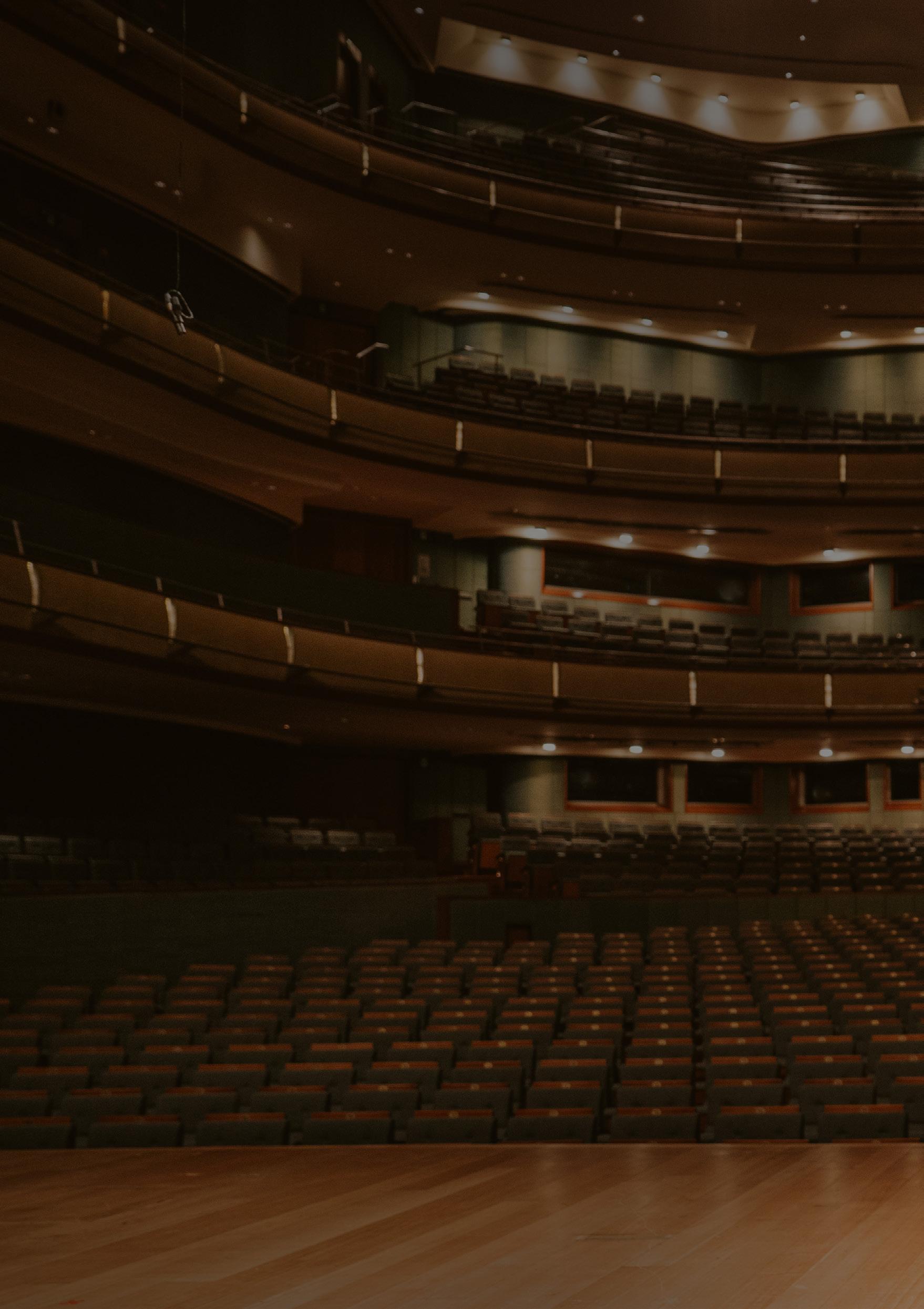
Darren Lim & En Yu Tan
D-Y Lin
Michelle Loh
Joanna Ludkiewicz & Robert Hunziker
Kishore & Anne Mahbubani
Christopher & Clarinda Martin
msm-productions
Ms Oang Nguyen & Dr Dang Vu
SC Global Developments Pte Ltd
Dr June & Peter Sheren
Tan Seow Yen
G L Wee
Chuin Wei Yap
Anonymous (6)
Dr Victor Lim
JN Loh
Jesher Loi
Francoise Mei Meng
Stephanie Mualim
Debra Ng
Kenneth Oo
Esmé Parish & Martin Edwards
Terese Poh
Ian & Freda Rickword
Audrey Ruyters
Farhana Sharmeen
The Sohn Yong Family
Julian Tan
Tang See Chim
Anthony Tay
Amanda Walujo
Eric Wong
Wong Yan Lei Grace
Wu Peihui
Anonymous (5)
Hyder Ahmad
Aloha Dental Clinic
Adeline Ang
Ang Seow Long
Tatiana Antonova & Stanislav Miroshnichenko
Anthony & Chloe Tan from ACE Team Foundation
BDA Partners Pte Ltd
Hans Michael Brandes
John Cai
Pauline Chan
Chang Chee Pey
Chang Julian
Jeanie Cheah
Cynthia Chee
Y C Chen
Zhihong Chen
Cheng Eng Aun
Andrew Cheong Zhiren
Dr Chew Chee Tong
Faith Chia
Chin Soon Yenn
Anthony Chng
Pamela Chong
Ruby Chong
Tiffany Choong & Shang Thong Kai
Clarissa Chow
Belinda Chua
Jennie Chua
Pierre Colignon
CP
Jeremy Ee
Jamie Lloyd Evans
J-P & Colette Felenbok
John & Pauline Foo
Dr Foo Swee Sen
Gan Yit Koon
Soumyadip Ghosh
Goh Chiu Gak
Mrs Goh Keng Hoong
Prof Goh Suat Hong
Yvette Goh
Heinrich Grafe

Gu Zhenhao
Parthesh Gulawani
Ilya Gutlin
Winston Hauw
Henry & Tiffany
Nishioka Hiroyuki
Dr Ho Su Ling
In memory of 黄招娣 (Huang Zhao Di)
Arjun Jolly & Priyanka Nayar
Claire & Ian Jones
Ad Ketelaars
Khim
Elizabeth Khoo
Ernest Khoo
Dr & Mrs Khoo Teng Kew
Dr Khoo Wei Ming
Khor Cheng Kian Kye
Colin Lang
Dr & Mrs Winson Lay
SuYin L
Lee Hyunsun
Kristen Lee
Dr Norman Lee
Lee Wei Jie
Voon S Leong
Wendy Leong Marnyi
Li Danqi & Liu Yi
Derek Lim
Edith & Sean Lim
Suzanne Lim
Lim Yuin Wen
Rachel Lin
Ling Yang Chang
Low Boon Hon
Alwyn Loy
Fabian Lua
Benjamin Ma
April Mak
Andre Maniam
Mattopher
McCann Family
Minwei
Dr Tashiya Mirando
Devika & Sanjiv Misra
John Morley
Ngiam Shih Chun
Mdm Ngo Hwee Bee
Ong Chee Siong
Ong Kay Jin Jason
Xinyi Ong
Victor Ow
Phua Ching Shyen
Pigar & William
Robert Khan & Co Pte Ltd
Danai Sae-Han
Kadir Satar
Hisaaki Sato
Sayawaki Yuri
Marcel Smit & Hanneke Verbeek
Soh Leng Wan
Ron & Janet Stride
Superb Cleaning Pte Ltd
Andrew & Jacqueline Tan
Casey Tan Khai Hee
Christine Tan & Jeremy Ting
Dr Giles Tan Ming Yee
Gillian & Daniel Tan
Gordon HL Tan
Jean Tan
Tan Kok Huan
Dr Tan Lay Kok
Michelle Tan
Min Tan
Dr Pamela Tan
Tan Peng Peng
Tan Siew Ling Celine
Linda Tan Soo
Tan Yee Deng
Tay Kim Ann
David Teng
Teo Eng Chai
Teo Kien Boon
Kyra Teo
Teo Wee Poh
Alessandro Tesei
Alicia Thian & Brian Bonde
Alan & Akashnee Thompson
Yang Tian
The Tomsik Family
Wang Lei & Gao Bo
Wang Meng
Wang Pei Zhong
Tania Wee
Kris Wiluan
Dr Wong Hin Yan
Jinny Wong
Wicky Wong
Jennifer S Wu
Valerie Wu
Xiao Li
Elaine Xu
Yan Xia
Yeow Ooh Teng
Lillian Yin
Yong Seow Kin
Zhang Zheng
Zheng Hongbo
Zhu Yulin
Anonymous (41)

This list reflects donations that were made from 1 Oct 2023 to 30 Sep 2024. We would like to express our sincere thanks to donors whose names were inadvertently left out at print time.
The Singapore Symphony Group is a charity and a not-for-profit organisation. Singapore tax-payers may qualify for 250% tax deduction for donations made. You can support us by donating at www.sso.org.sg/donate or www.giving.sg/sso.
SUPPORT THE SSO
How can you help?
While SSO is supported partially by funding from the Singapore government, a significant part can only be unlocked as matching grants when we receive donations from the public. If you are in a position to do so, please consider making a donation to support your orchestra – Build the future by giving in the present.
As a valued patron of the SSO, you will receive many benefits.
COMPLIMENTARY TICKETS*
Subscription/ Chamber and Organ /Family/ SIPF Gala/Christmas/ Pops
SSO Special Gala Concerts
DONOR RECOGNITION & PUBLIC ACKNOWLEDGEMENT
Concert booklets and website
Patron of the Arts Nomination
Donors’ Wall at VCH
OTHER BENEFITS
Invitation to special events
Donations of $100 and above will entitle you to priority bookings, and discounts^ on SSG Concerts. For tax residents of Singapore, all donations may be entitled to a tax deduction of 2.5 times the value of your donation.
*Complimentary ticket benefits do not apply to Esplanade & Premier Box seats, or supporters who give through a fundraising event.
^Discounts are not applicable for purchase of Esplanade & Premier Box seats.
Through the SSO and its affiliated performing groups, we spread the love for music, nurture talent and enrich our diverse communities.
The Singapore Symphony Orchestra is a charity and not-for-profit organisation. To find out more, please visit www.sso.org.sg/support-us, or write to Nikki Chuang at nikki@sso.org.sg
We recognise major gifts that help sustain the future of the Singapore Symphony Group. The recognition includes naming of a position in the SSO or in our affiliated performance groups such as the Singapore National Youth Orchestra and the Singapore Symphony Choruses.
SSO CONCERTMASTER GK GOH CHAIR
In July 2017, the SSO established the GK Goh Chair for the Concertmaster. Mr Goh Geok Khim and his family have been long-time supporters of the national orchestra. We are grateful for the donations from his family and friends towards this Chair, especially Mr and Mrs Goh Yew Lin for their most generous contribution.
Mr Igor Yuzefovich was the inaugural GK Goh Concertmaster Chair. The position is currently vacant.

NG PEI-SIAN PRINCIPAL CELLO
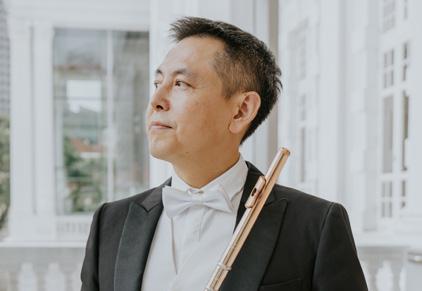
JIN TA PRINCIPAL

SSO PRINCIPAL CELLO
THE HEAD FOUNDATION CHAIR
In recognition of a generous gift from The HEAD Foundation, we announced the naming of our Principal Cello, “The HEAD Foundation Chair” in November 2019. The Chair is currently held by Principal Cellist Ng Pei-Sian.
SSO PRINCIPAL FLUTE
STEPHEN RIADY CHAIR
In recognition of a generous gift from Dr Stephen Riady, we announced in May 2022 the naming of our Principal Flute, “Stephen Riady Chair”. The position is currently held by our Principal Flutist Jin Ta.
SSO PRINCIPAL VIOLA
TAN JIEW CHENG CHAIR
In recognition of a generous gift from the Estate of Tan Jiew Cheng, we announced in February 2024 the naming of our Principal Viola, “Tan Jiew Cheng Chair”. The position is currently held by our Principal Violist Manchin Zhang.
For more information, please write to director_development@sso.org.sg.
CORPORATE PATRONAGE

HEARTFELT THANKS TO OUR CORPORATE PATRONS
Temasek Foundation
The HEAD Foundation
Stephen Riady Group of Foundations
Holywell Foundation
Lee Foundation
Yong Hon Kong Foundation
Aquilus Pte Ltd
Elaine and Eduardo Saverin Foundation Ltd
Embassy of France in Singapore
IN-KIND SPONSORS
Raffles Hotel Singapore
SMRT Corporation
Singapore Airlines
Conrad Centennial Singapore
Symphony 924
Form a special relationship with Singapore’s national orchestra and increase your brand recognition among an influential and growing audience.
We provide our Corporate Patrons with impressive entertainment and significant branding opportunities. Through our tailored packages, corporates may benefit from:
• Publicity and hospitality opportunities at an SSO concert or your private event,
• Acknowledgement and mentions in SSO’s key publicity channels,
• National Arts Council (NAC) Patron of the Arts nominations,
• Tax benefits.
Packages start at $10,000 and can be tailored to your company’s branding needs.
We partner with various corporates through tailored in-kind sponsorship and exchange of services. Current and recent partnerships include Official Hotel, Official Airline, and we offer other exciting titles.
For more details, please write to Chelsea Zhao at chelsea.zhao@sso.org.sg.

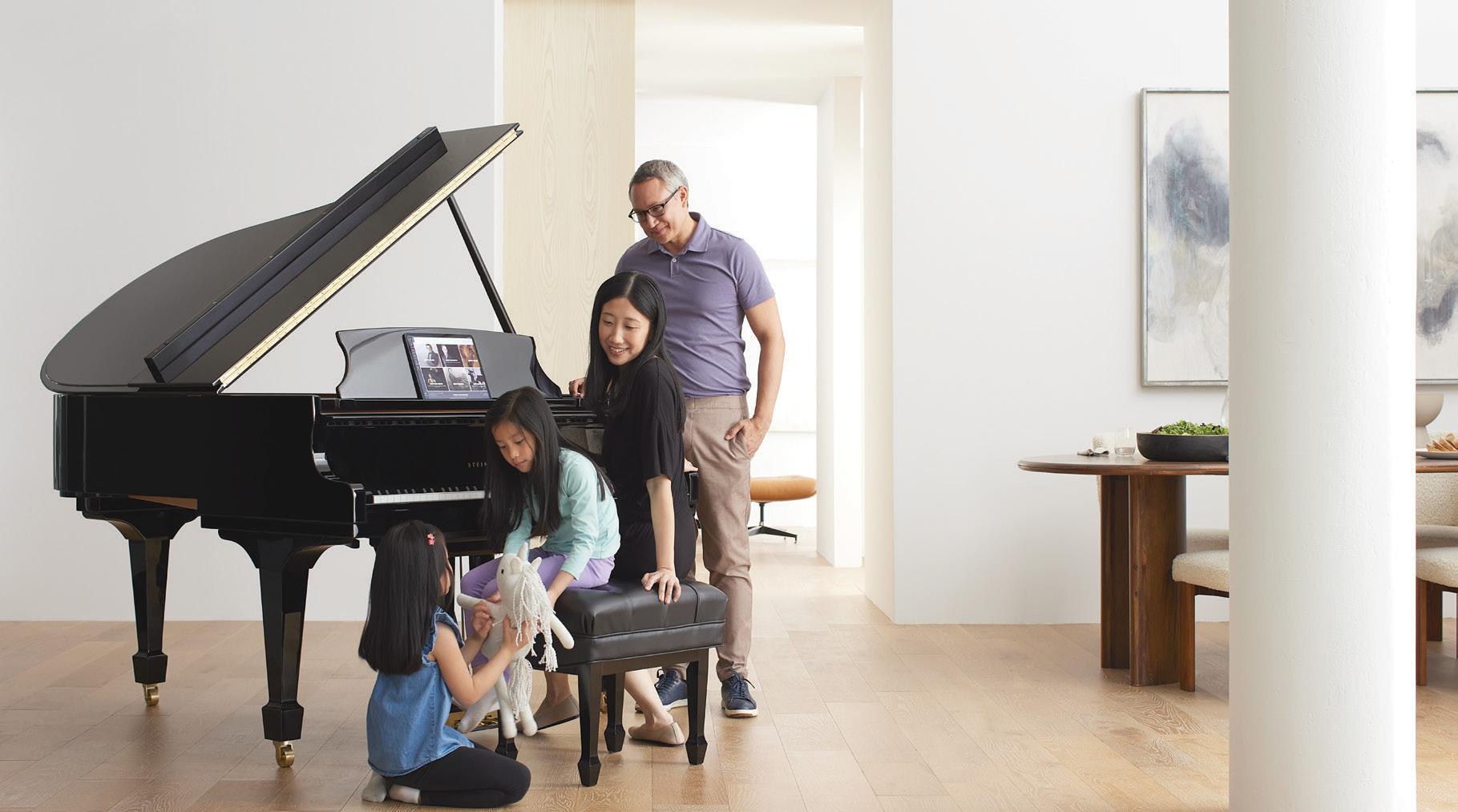
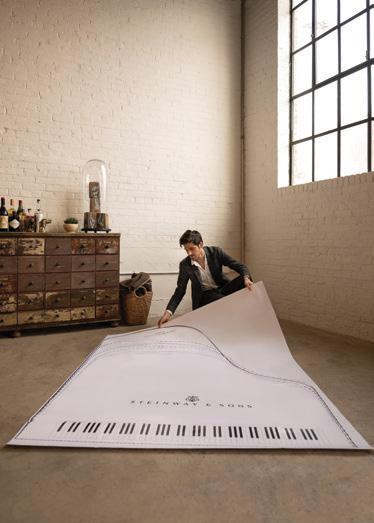





CHAIR
Goh Yew Lin
BOARD OF DIRECTORS
Chang Chee Pey
Chng Kai Fong
Andress Goh
Kenneth Kwok
Clara Lim-Tan
Jesher Loi
Lynette Pang
Prof Qin Li-Wei
Jovi Seet
Farhana Sharmeen
Doris Sohmen-Pao
Prof Peter Tornquist
Geoffrey Wong
Andrew Yeo Khirn Hin
EXECUTIVE & NOMINATING COMMITTEE
Goh Yew Lin (Chair)
Chng Kai Fong
Lynette Pang
Geoffrey Wong
HUMAN RESOURCES COMMITTEE
Doris Sohmen-Pao (Chair)
Jesher Loi
Prof Qin Li-Wei
Heinrich Grafe*
Carmen Wee*
FINANCE & INVESTMENT COMMITTEE
Geoffrey Wong (Chair)
Andress Goh
Chua Keng Hong*
Alex Lee*
AUDIT & RISK COMMITTEE
Jovi Seet (Chair)
Prof Peter Tornquist
Andrew Yeo Khirn Hin
Ryan Siek*
COMMUNITY & YOUTH ENGAGEMENT COMMITTEE
Clara Lim-Tan (Chair)
Chang Chee Pey
Farhana Sharmeen
Asst Prof Kat Agres*
Cecilia Pang*
SSO MUSICIANS’ COMMITTEE
Mario Choo
David Smith
Wang Xu
Christoph Wichert
Yang Zheng Yi
Elaine Yeo
Zhao Tian
SSO COUNCIL
Alan Chan (Chair)
Odile Benjamin
Prof Chan Heng Chee
Prof Arnoud De Meyer
Dr Geh Min
Heinrich Grafe
Khoo Boon Hui
Liew Wei Li
Lim Mei
Sanjiv Misra
Paige Parker
Dr Stephen Riady
Priscylla Shaw
Prof Gralf Sieghold
Prof Bernard Tan
Dr Tan Chin Nam
Wee Ee Cheong
Yong Ying-I
*co-opted member
CHIEF EXECUTIVE OFFICER
Kenneth Kwok
DEPUTY CEO, PROGRAMMES & PRODUCTION
Kok Tse Wei
DEPUTY CEO, PATRONS & CORPORATE SERVICES
Jenny Ang
CEO OFFICE
Shirin Foo
Musriah Bte Md Salleh
ORGANISATION DEVELOPMENT
Lillian Yin
ARTISTIC PLANNING
Hans Sørensen (Head)
Artistic Administration
Jodie Chiang
Terrence Wong
Jocelyn Cheng
Michelle Yeo
OPERATIONS
Ernest Khoo (Head)
Library
Lim Lip Hua
Wong Yi Wen
Adlina Bte Ashar
Cheng Yee Ki
Orchestra Management
Chia Jit Min (Head)
Charis Peck Xin Hui
Kelvin Chua
Production Management
Noraihan Bte Nordin
Nazem Redzuan
Leong Shan Yi
Asyiq Iqmal
Khairi Edzhairee
Khairul Nizam
Benjamin Chiau
COMMUNITY IMPACT
Community Engagement
Kua Li Leng (Head)
Whitney Tan
Samantha Lim
Lynnette Chng
Choral Programmes
Kua Li Leng (Head)
Chang Hai Wen
Mimi Syaahira
Singapore National Youth
Orchestra
Ramu Thiruyanam (Head)
Tang Ya Yun
Tan Sing Yee
Ridha Ridza
ABRSM
Patricia Yee
Lai Li-Yng
Joong Siow Chong
Freddie Loh
May Looi
PATRONS
Development
Chelsea Zhao (Head)
Nikki Chuang
Sarah Wee
Brandon Lim
PATRONS
Communications, Digital & Marketing
Cindy Lim (Head)
Communications
Elliot Lim
Elizabeth Low
Clairene Tan
Digital & Marketing
Chia Han-Leon
Calista Lee
Myrtle Lee
Hong Shu Hui
Jana Loh
Kashmira Kasmuri
Customer Experience
Randy Teo
Dacia Cheang
Joy Tagore
CORPORATE SERVICES
Finance, IT & Facilities
Rick Ong (Head)
Alan Ong
Goh Hoey Fen
Loh Chin Huat
Md Zailani Bin Md Said
Human Resources & Administration
Valeria Tan (Head)
Janice Yeo
Fionn Tan
Netty Diyanah Bte Osman



Eric Watson
Concerto Arabesque for Flute and Strings (World Premiere) (Rachel Ho - flute)


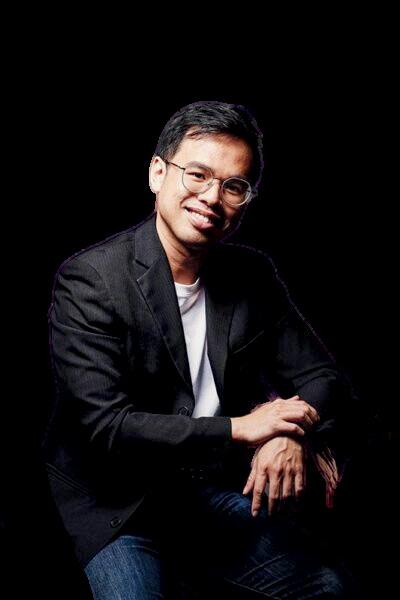
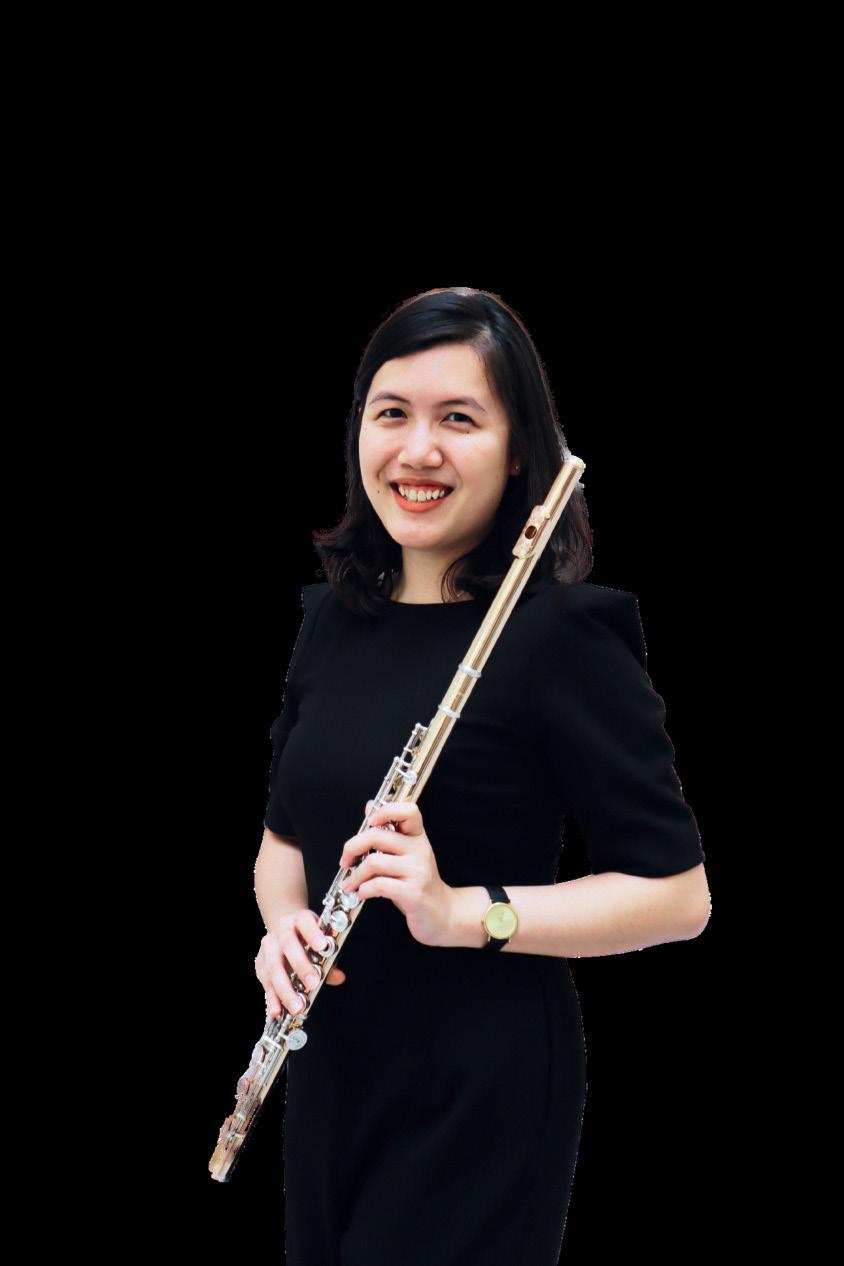
Maurice Ravel
Le Tombeau de Couperin
Francis Poulenc

Concerto for Two Pianos (Nicholas Loh, Jonathan Shin - piano)
Wed, 13 Nov 2024 7:30pm Victoria Concert Hall
With the Support of Presented by Tickets via BookMyShow $38/$28 www.resoundcollective.org


at the Victoria Concert Hall
27 OCT 2024 l 4PM
SSO Organ Series: A Gothic Halloween

31 OCT 2024 l 7.30PM
SSO Baroque Festival: Music of the Knight

Singapore Symphony Chorus
Eudenice Palaruan
Choral Director & organ
Ellissa Sayampanathan
Assistant Choral Conductor
1 NOV 2024 l 7.30PM
SSO Baroque Festival: Water Music Sweet
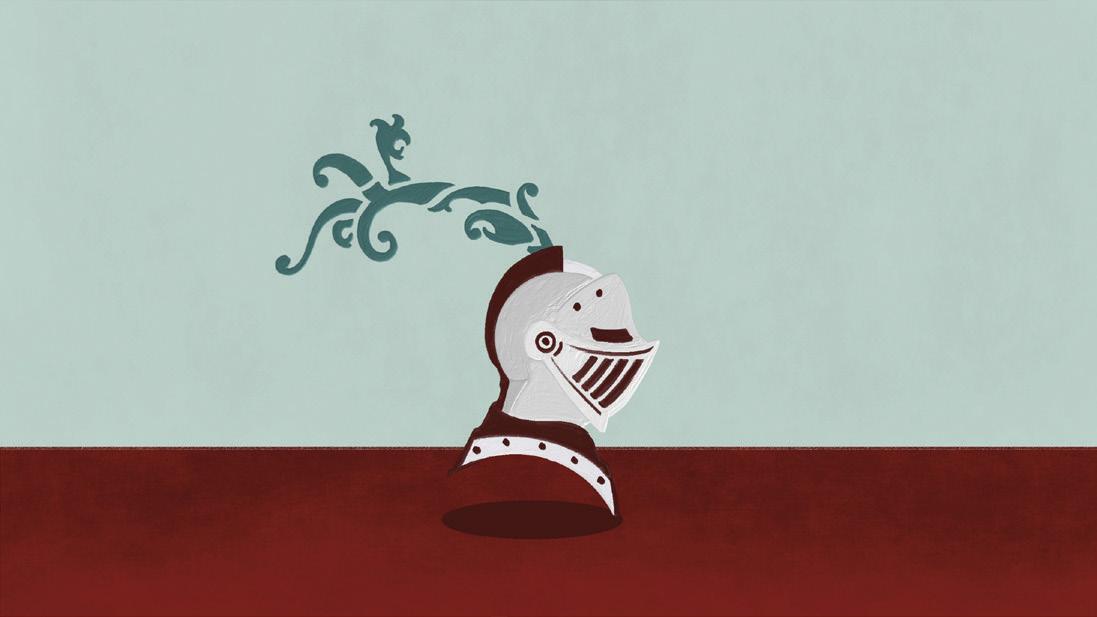
Shane Thio celesta & piano
Boey Jir Shin organ
Ticket s from $10
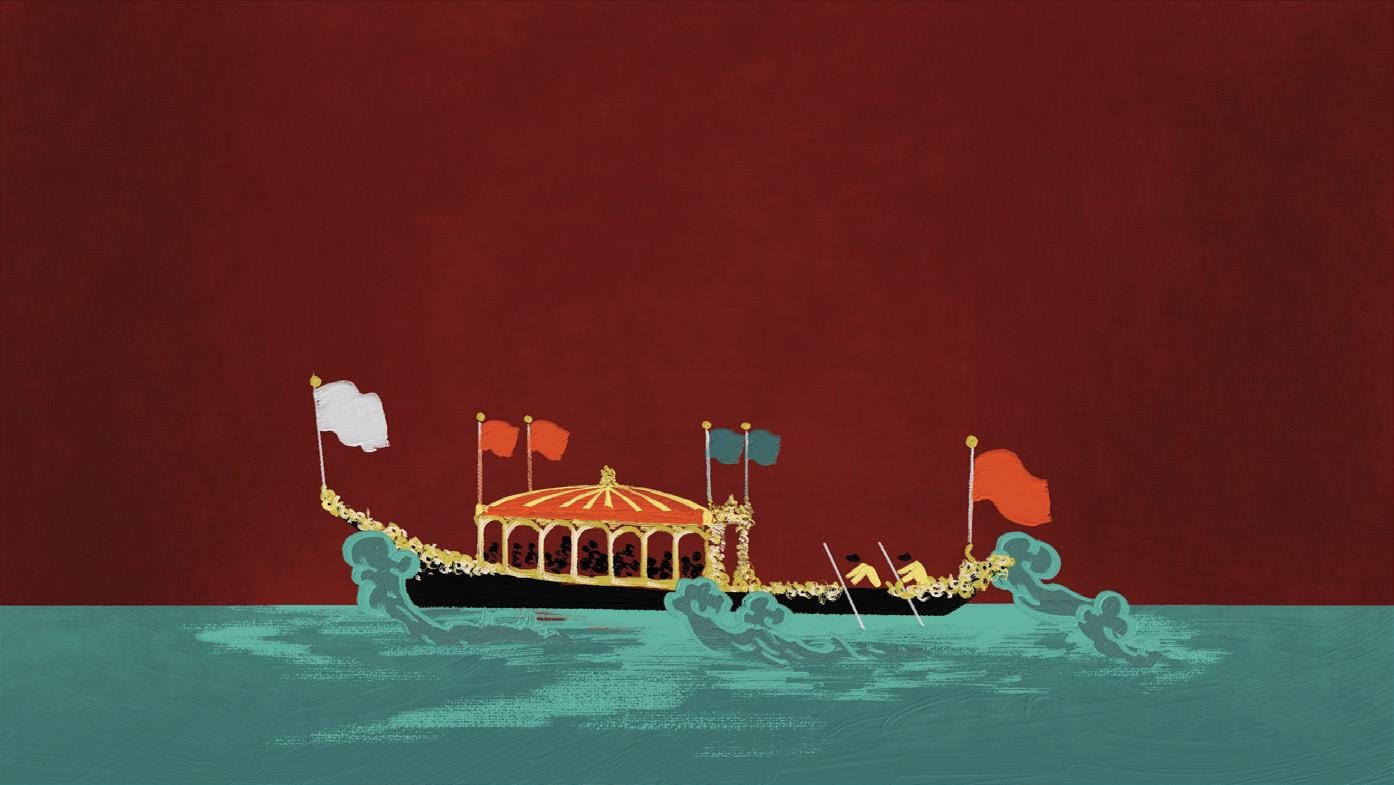
Singapore Symphony Orchestra
Symphony Orchestra


The vision of the Singapore Symphony Group is to be a leading arts organisation that engages, inspires and reflects Singapore through musical excellence. Our mission is to create memorable shared experiences with music. Through the SSO and its affiliated performing groups, we spread the love for music, nurture talent and enrich our diverse communities. The Singapore Symphony Orchestra is a charity and not-for-profit organisation. You can support us by donating at www.sso.org.sg/donate